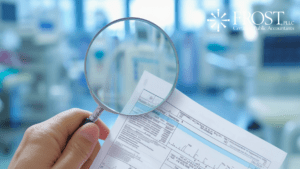How Agricultural Audits Help Protect Your Farm from Financial Risks
How Agricultural Audits Help Protect Your Farm from Financial Risks
Blog Article
Maximize Profits: The Crucial Guide to Food Processing Accountancy
This overview discovers the complex connection in between price monitoring, labor effectiveness, and economic reporting, supplying insights that can improve procedures and boost decision-making. Secret bookkeeping techniques, paired with the critical use of technology, can transform monetary efficiency.
Comprehending Food Handling Costs

Raw product expenses typically stand for the largest part of costs, requiring cautious monitoring of sourcing and stock levels. Labor prices additionally play an essential role, as knowledgeable employees are vital for keeping top quality and performance. Overhead expenses, consisting of energies, rental fee, and administrative expenditures, must be checked to ensure they do not erode profit margins.
Understanding these cost parts enables food handling services to create effective budgeting approaches, maximize resource appropriation, and identify locations for expense reduction. Ultimately, an extensive grasp of food processing expenses is necessary for educated decision-making and achieving sustainable growth within the market.
Trick Accountancy Concepts
Effective management of food handling expenses depends on a strong foundation of accounting concepts. These principles serve as the framework for recording, evaluating, and analyzing financial data, guaranteeing that food handling organizations can precisely evaluate their earnings and functional effectiveness.
First, the principle of consistency is crucial. It mandates that organizations use the very same audit techniques in time, assisting in trustworthy comparisons of economic statements. Next, the matching concept needs that costs be taped in the exact same period as the profits they help produce, which is important for precise profit measurement.
Additionally, the cost principle determines that assets should be recorded at their original purchase cost, giving a clear basis for depreciation and property evaluation. The accrual basis of bookkeeping likewise plays a considerable duty, as it identifies costs and incomes when they are incurred, as opposed to when cash changes hands. This method offers an extra reasonable view of monetary health and wellness.
Lastly, the conservatism concept recommends that capacity expenses and liabilities ought to be acknowledged as quickly as they are probable, while incomes ought to just be acknowledged when they are ensured. By adhering to these key audit concepts, food handling firms can enhance their monetary oversight and tactical decision-making.
Financial Coverage Basics
Monetary reporting is critical for food processing companies, as it supplies a clear sight of their monetary efficiency and setting. Timely and exact monetary reports allow management to make informed choices, guaranteeing the business continues to be affordable and successful in a challenging market.
Secret elements of financial coverage include the earnings statement, equilibrium sheet, and cash circulation statement. The income declaration uses insights into incomes, prices, and internet earnings, exposing operational performance.
In addition, sticking to Typically Accepted Accountancy Principles (GAAP) or International Financial Coverage Criteria (IFRS) is crucial for check that uniformity and integrity. Normal monetary coverage not only help inner administration yet likewise meets external commitments to stakeholders, capitalists, and regulatory bodies.
Ultimately, robust economic reporting is important for calculated preparation and threat administration, allowing food processing business to navigate market variations and maximize development possibilities successfully.
Price Control Approaches
Preserving a strong monetary setting is not exclusively concerning exact coverage; it also includes executing efficient expense control strategies (Agriculture Click Here accounting). In the food processing sector, where margins can be tight, managing expenses is crucial for taking full advantage of productivity
One trick technique is to conduct regular price analysis. By reviewing the prices linked with basic materials, labor, and above, companies can determine locations where financial savings can be accomplished. Executing a standard budgeting process enables much better forecasting and tracking of costs, allowing prompt changes to be made.
Another efficient method is to negotiate desirable terms with vendors. Developing long-lasting relationships can lead to quantity discounts, which straight minimize the cost of goods sold. Additionally, investing in employee training can enhance productivity and lower waste, contributing to overall cost effectiveness.
Finally, taking on lean manufacturing concepts can simplify procedures by removing unnecessary steps in the manufacturing process. This not just reduces waste however likewise boosts high quality and speed. By concentrating on these price control techniques, food handling companies can improve their financial performance and ensure sustainable development in a competitive marketplace.
Leveraging Innovation in Accountancy
Embracing innovation in accounting can dramatically improve efficiency and accuracy within the food handling sector. By incorporating innovative software remedies, food mill can automate recurring jobs such as pay-roll, inventory, and invoicing monitoring. This not only reduces the possibility for human mistake yet additionally permits financing groups to focus on tactical decision-making instead than mundane administrative obligations.
Cloud-based accounting systems supply real-time access to monetary data, enabling services to keep track of money flow, expenses, official site and earnings from anywhere - Agriculture accounting. This versatility is specifically useful in a vibrant industry where cost variations and supply chain obstacles are widespread. Additionally, using information analytics devices encourages business to extract actionable insights from their economic information, bring about educated service choices that can drive productivity
Moreover, leveraging innovations like Artificial Intelligence (AI) and Artificial Intelligence (ML) can boost projecting abilities, allowing for far better need planning and source allocation. As governing compliance comes to be increasingly intricate, technology can also help in ensuring adherence to financial coverage requirements and food safety and security regulations. Ultimately, investing in technical improvements in accounting is not simply an operational renovation; it is a critical necessity for food processing business intending to flourish in an affordable market.

Conclusion
In verdict, effective management of food processing costs is critical for boosting productivity within the industry. Implementing durable expense control methods and leveraging innovation for automation and data analytics further enhance functional efficiency.
Understanding the expenses associated with food handling is important for organizations aiming to preserve earnings and competitiveness in a vibrant market. Understanding these cost components permits food handling services to develop effective budgeting approaches, optimize source allocation, and determine locations for expense reduction. Ultimately, a thorough grasp of food processing costs is vital for educated decision-making and accomplishing lasting development within the industry.
Furthermore, the expense principle dictates that assets ought to be recorded at their initial acquisition expense, supplying a clear basis for depreciation and possession valuation. By focusing on these cost control methods, food processing companies can boost their financial performance and ensure lasting growth in a competitive market.
Report this page